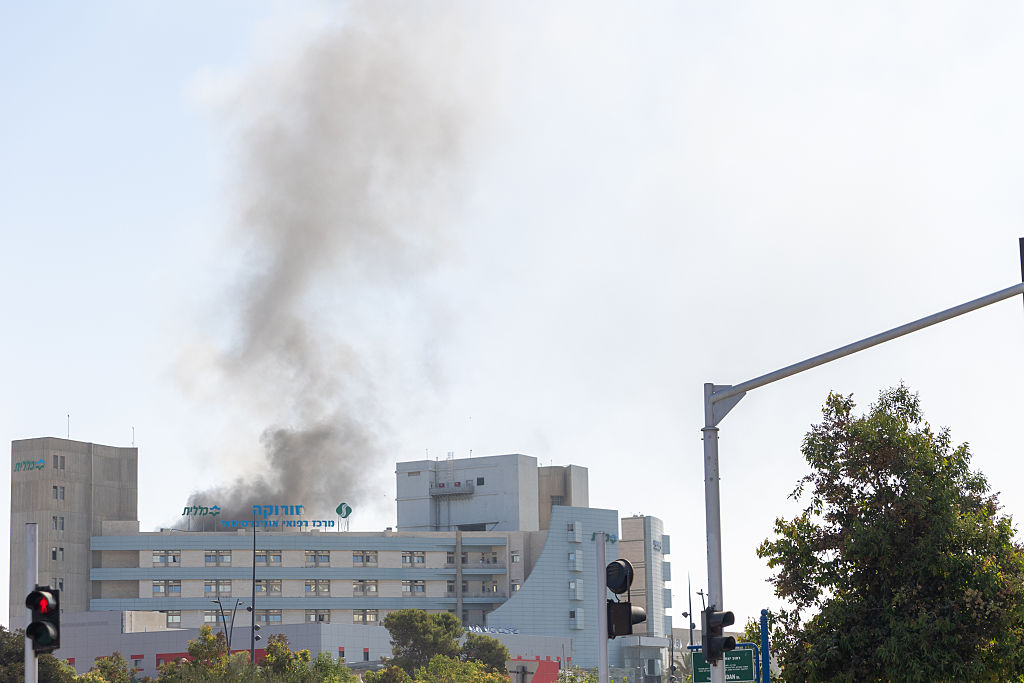An Iranian missile struck the main hospital in southern Israel early Thursday, inflicting extensive damage and wounding multiple individuals as the Israel-Iran conflict entered a dangerously escalated phase. The strike on Soroka Medical Center, one of Israel’s largest hospitals, marked a significant shift in targeting civilian medical infrastructure. Israeli media aired images of shattered windows, damaged wards, and thick black smoke engulfing the hospital complex.
In response, Israel has intensified its military campaign, gaining what officials describe as decisive air superiority over Iranian territory. The Israeli Defense Forces (IDF) reported neutralizing dozens of Iranian missile launchers—accounting for more than a third of Iran’s overall arsenal—often striking them as they were being prepared for launch. This operational advantage has allowed Israel to establish a direct air corridor to Tehran, enabling a new wave of raids on Iranian military targets in and around the capital. Authorities in Iran have urged residents of the villages of Arak and Khondab to evacuate ahead of expected airstrikes on local military infrastructure.
The conflict reached new heights overnight as Israeli aircraft launched another assault on Iran’s Natanz nuclear facility. The Israeli military claims the site is being used for nuclear weapons development. This marks the second such strike on Natanz within the week. Earlier attacks are believed to have destroyed underground uranium enrichment centrifuges, a claim partially corroborated by the International Atomic Energy Agency (IAEA). Additional reports indicate Israeli forces also targeted Iran’s Arak heavy water reactor, escalating concerns over regional nuclear security.
Iran responded by launching its 14th wave of missile attacks on Israel early Thursday morning. Over 25 missiles were fired in the latest barrage, targeting key strategic sites. According to Iranian sources, the Revolutionary Guard Corps successfully struck the Israeli army’s cyber command headquarters and an intelligence center in Gav Yam. Another missile reportedly hit a high-rise and several residential buildings near Tel Aviv.
Israel’s national rescue service confirmed that at least 40 people were injured in the latest round of Iranian strikes. Among the damaged sites was the Israeli stock exchange building. Authorities now confirm at least 24 fatalities from Iranian missile attacks since the onset of this phase of the conflict. The hit on Soroka hospital remains the most severe blow to medical infrastructure since hostilities began.
Despite Israeli air dominance, Iran continues to conduct more selective and targeted missile strikes. Analysts suggest that the declining frequency of Iranian launches is the result of Israel’s successful campaign to destroy missile platforms and storage sites before deployment.
Meanwhile, U.S. President Donald Trump is reported to be evaluating military intervention options, with the crisis threatening to spill over into a broader West Asian confrontation. In a stern warning, Iran’s Supreme Leader Ayatollah Ali Khamenei declared that any American strikes on Iranian soil would provoke “serious, irreparable consequences,” increasing the stakes of potential U.S. involvement.










